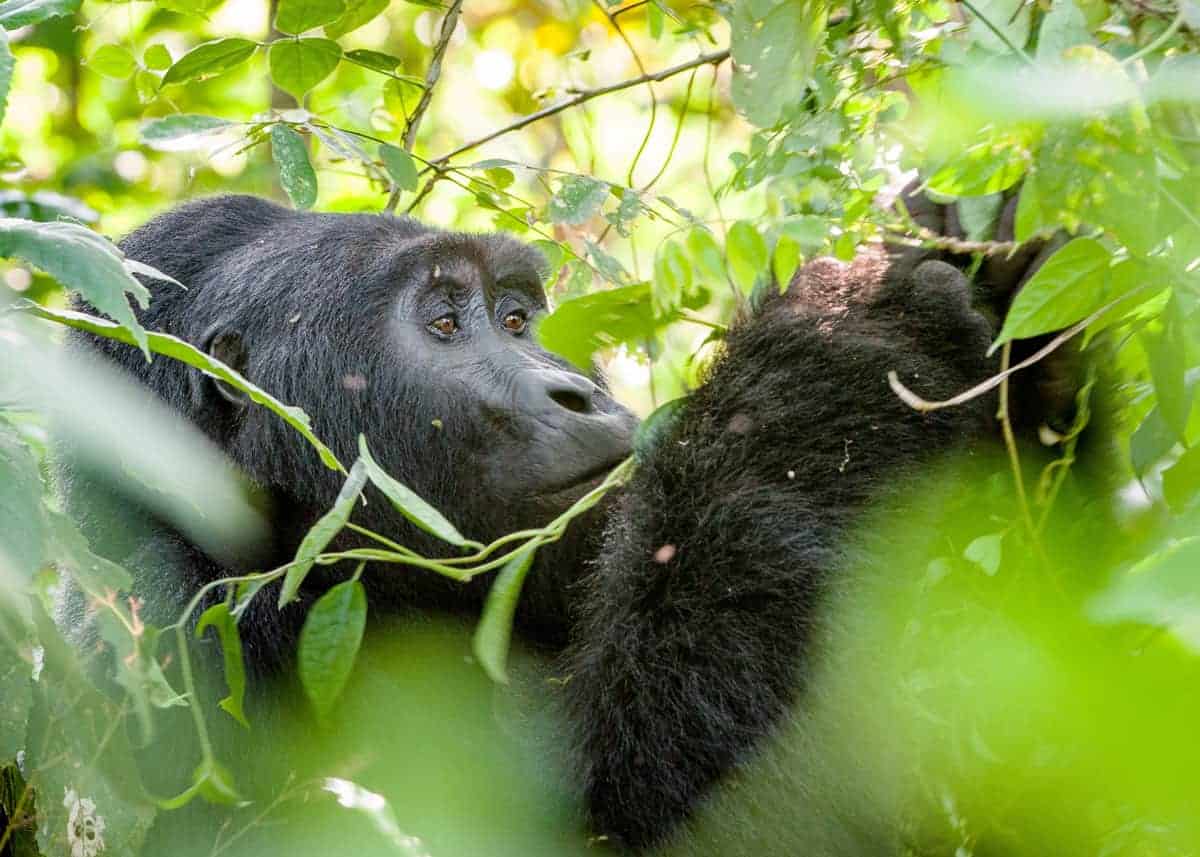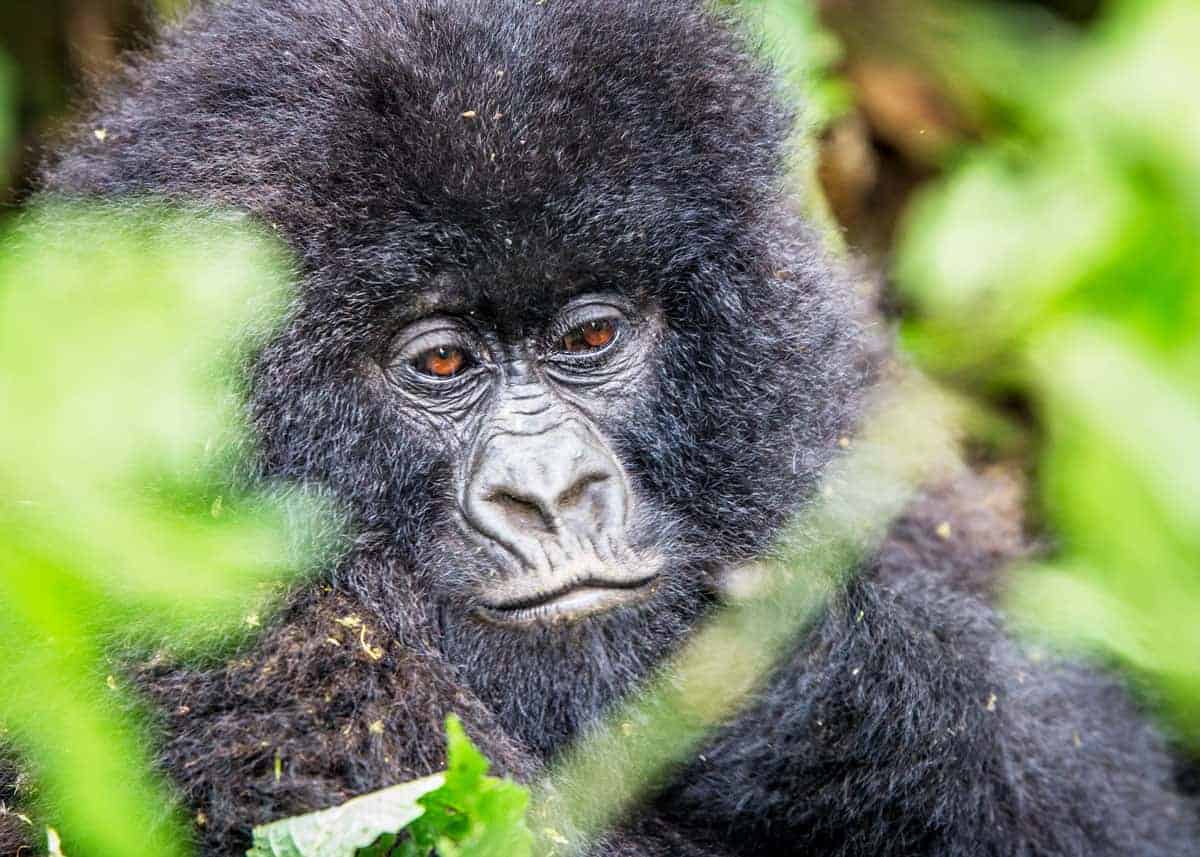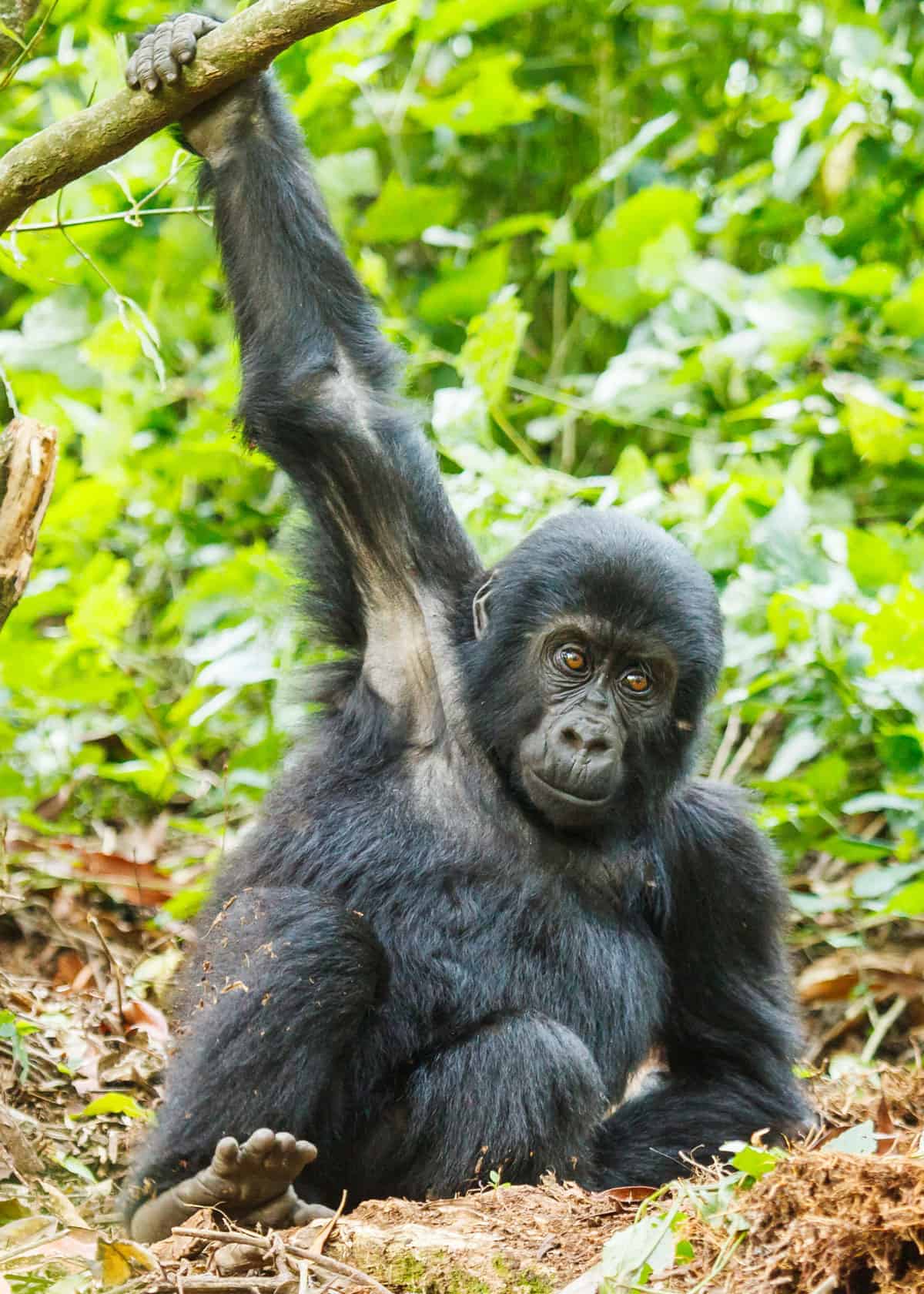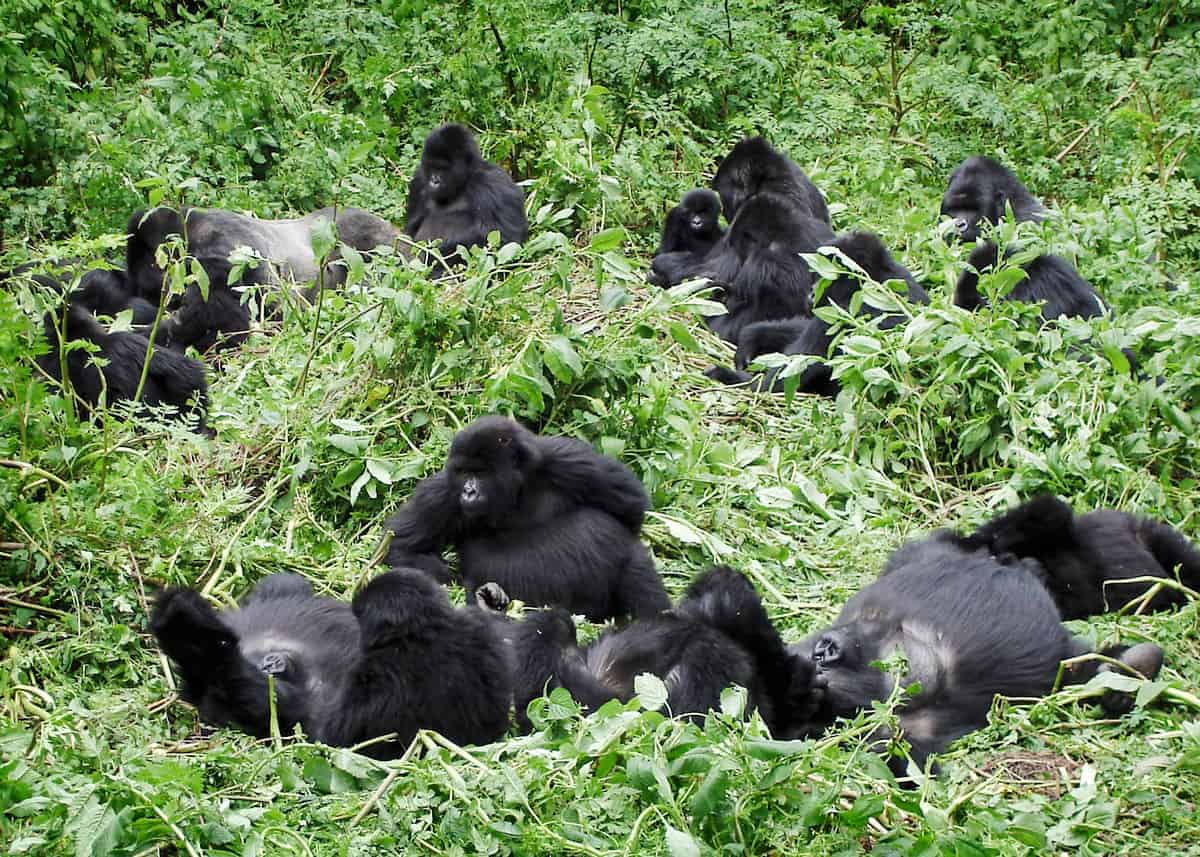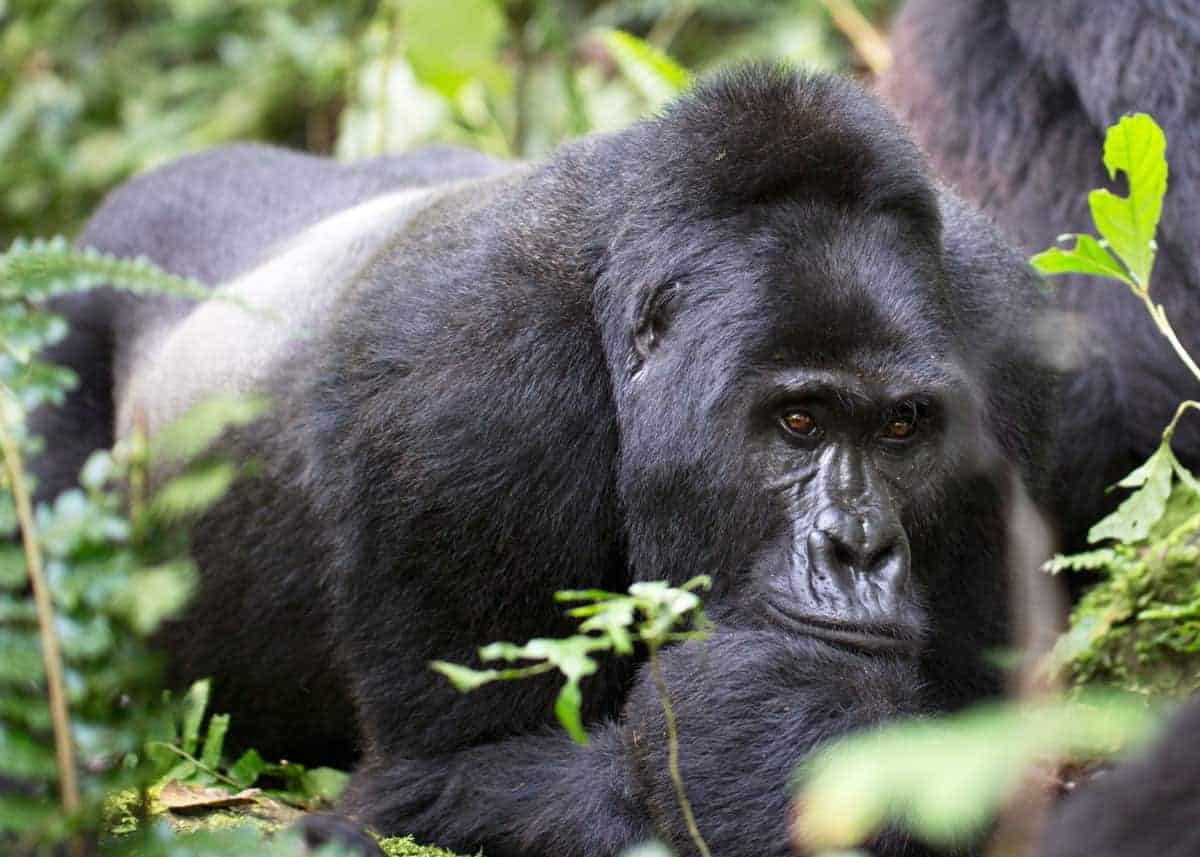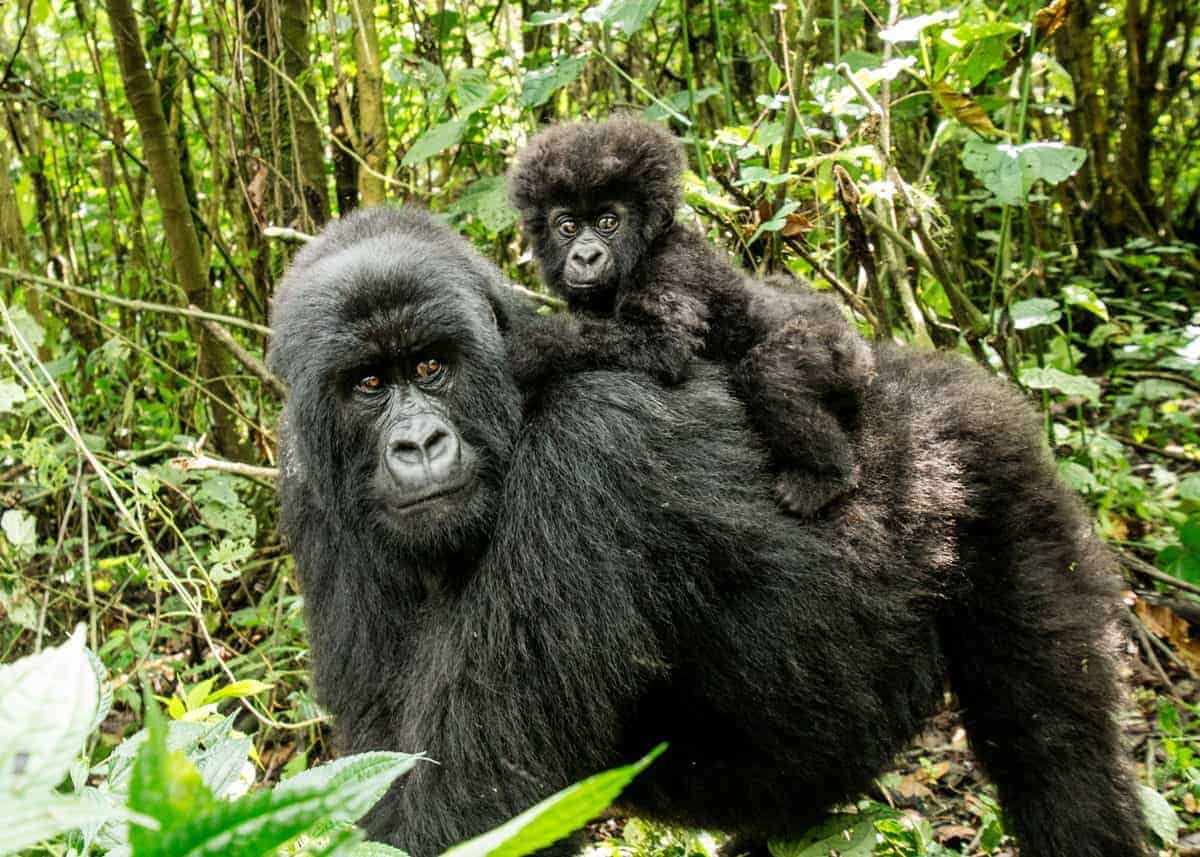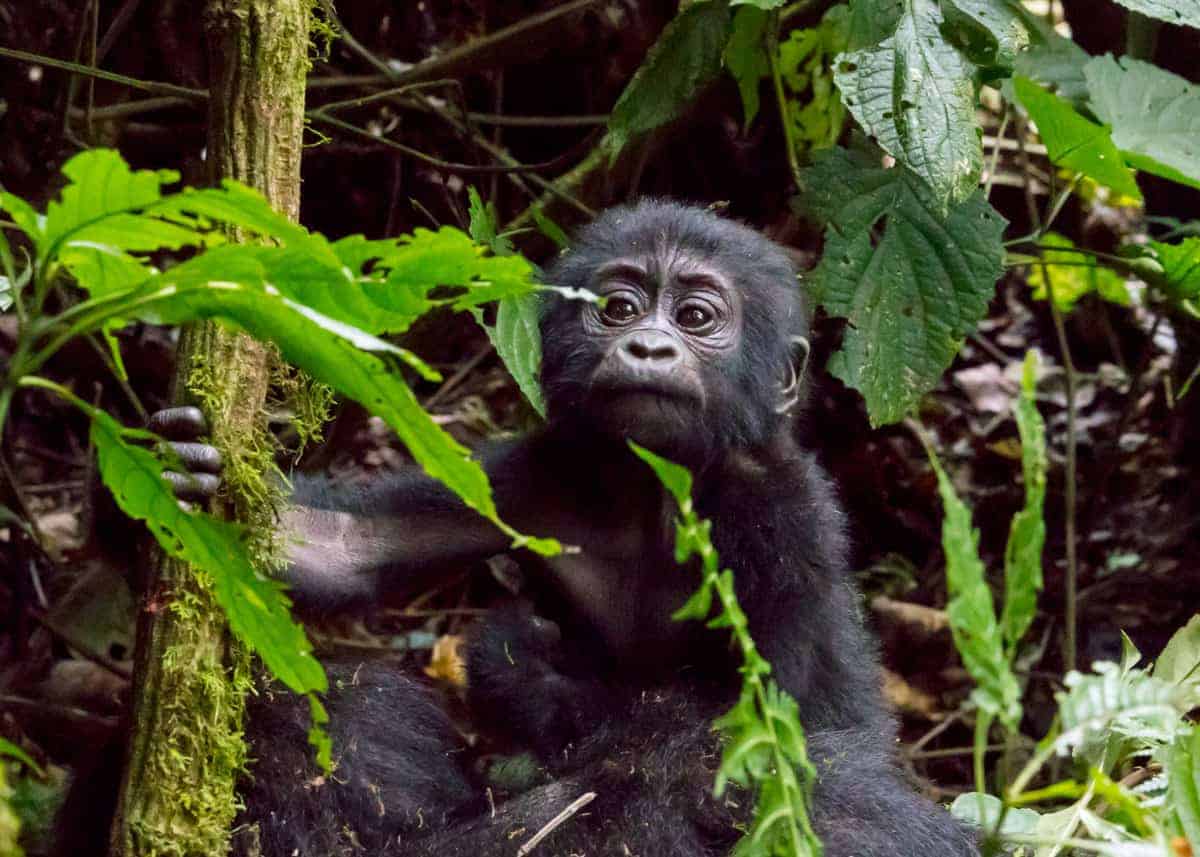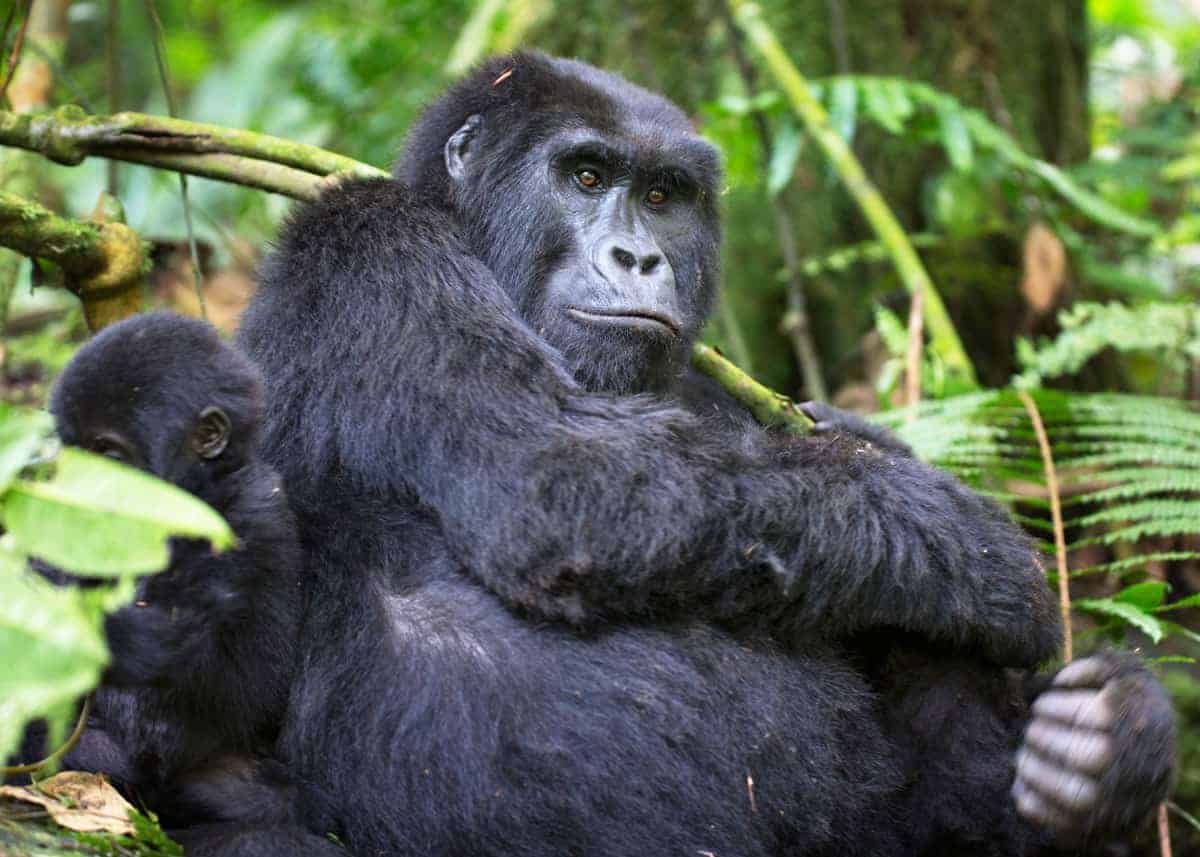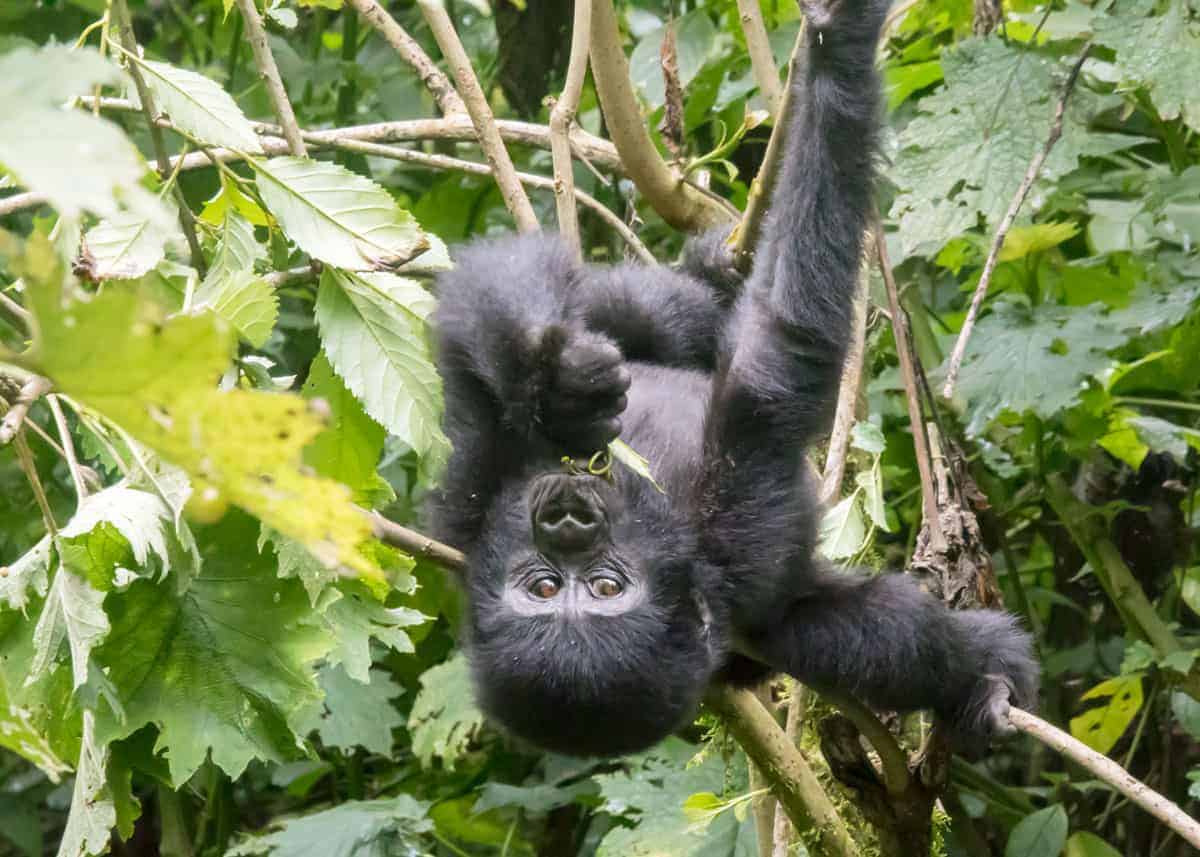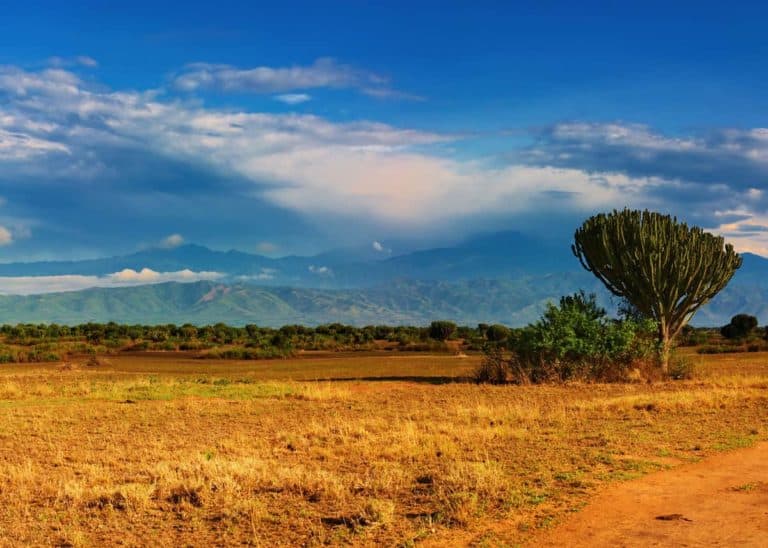19 Amazing Facts About Uganda Mountain Gorillas (Silverback, Baby, Habitat…)
In this post, you’ll learn all about Uganda mountain gorillas, including their diet, habitat, silverbacks and more. You’ll also learn specific facts about male, female and baby gorillas.
And you’ll see lots of amazing pictures and video.
19 Amazing Facts About Uganda Mountain Gorillas
Because Uganda is one of only three places where you can find the mountain gorilla species, many people like visiting the “Pearl of Africa” to join trekking tours where they can view these amazing mammals. They are special creatures, and before you go to Uganda, you should research and learn as much as you can about them.
To help you out, we offer a list of amazing facts about the mountain gorillas of Uganda.
Let’s get started!
1. You Won’t Find Them in a Zoo
Mountain gorillas do not survive in captivity. The gorillas you’ve encountered in zoos are most likely from the lowlands of western Africa.
The mountain gorilla subspecies can only be found in the high, forested mountains of the African countries of Rwanda, Uganda and the Democratic Republic of Congo.
2. Their Population Numbers are Few
The total mountain gorilla population is estimated to be around 900 individuals.
More than half of this population is found in Uganda in Mgahinga Gorilla National Park and Bwindi Impenetrable Forest National Park, with the latter containing the largest mountain gorilla concentration. Trekking tours are available in these national parks for tourists to see Uganda gorillas up close.
3. They Aren’t Exactly Like Other Gorillas
While they may look similar, mountain gorillas and other gorillas are not exactly alike. Not only is it larger than other primates, but the mountain gorilla subspecies also features more physical characteristics differing from other gorillas.
For example, because it lives in high altitudes and a cold climate, the mountain gorilla has longer, thicker and darker fur than its lowland relatives. Also, the mountain gorilla’s arms are shorter, but its nose, teeth and jaw are larger than that of other gorillas.
While all gorillas can climb trees, the mountain gorilla tends to stick more to the ground.
Check out our Travelers Guide to Uganda’s 10 National Parks (and 4 Wildlife Game Reserves)
4. They are Gentle Giants
Safari tourists to Bwindi Impenetrable Forest often ask if Uganda gorillas are aggressive or dangerous. While their immense size and strength may appear intimidating, these creatures tend to be more shy and gentle than violent.
However, if they feel threatened, these gorillas can become aggressive, beating their chests while grunting and roaring. Also, a mother gorilla will fight to the death if she feels her baby is threatened.
5. They Cry, Laugh and Play Like Us
Just like you and me, the mountain gorilla has emotions and can cry when he or she is injured or feels sad. A mountain gorilla will even laugh when tickled. Young gorillas will play together like human children and even behave mischievously.
6. They are Family-Oriented
Uganda gorillas live and travel in groups of 5 to 30 individuals. These family groups are called troops and are made up of an alpha male with several females and their infants or juvenile offspring.
When a male reaches the age of breeding (usually age 15), he will strike out on his own, taking some females with him to begin his own family. Many gorilla family groups are commanded by a single silverback. See #8 for silverback gorilla facts.
7. They Communicate in Their Own Way
The mountain gorilla is not physically able to make vocal sounds like humans, but it does possess several vocal sounds and gestures that are used to communicate with others.
Grunts, barks, hoots and hand gestures are often used during social interaction. Chest beating, screams and roars may be used to signify alarms. Belching is a sign that a gorilla is content.
8. Facts about Male Mountain Gorillas (Silverbacks)
The lifespan of a mountain gorilla is approximately 40 to 50 years old. Male gorillas are considered mature when they begin to breed around the age of 15. During this time, they are called black-backs.
As they age, the black hair on their backs turns silver, giving them the name “silverback.” A few silverback gorilla facts include the silverback male often being the father and protector of his family.
Silverback gorillas also maintain order in the family and determine times when the troop travels, rests and eats. As the more aged males, a silverback is usually larger and stronger than other males. A silverback can lift ten times the weight of his body and even hang from one arm supporting 400 pounds.
More reading: How Strong is a Gorilla?
9. Facts About Female Mountain Gorillas
Female gorillas become sexually mature much earlier than the males.
Many females will give birth at the age of ten. They usually give birth to single babies but can occasionally produce twins. Because a baby is often nursed and reared for up to six years, most female gorillas will produce about four to six offspring throughout their entire reproductive lives.
10. Facts About Baby Mountain Gorillas
Since there is no specific mating season among the mountain gorilla species, babies are born anytime throughout the year.
At birth, they typically weigh around 1.8 kg (4 lb.), less than a human baby. However, they develop at a much faster rate than humans and can sit upright at the age of three months.
Their first four years are spent nursing, weaning and hanging from the backs of their mothers. Playing with other infant gorillas teaches them how to interact within the family group.
11. They Are Wandering Nomads
The mountain gorilla groups do not live in one spot. Like nomads, they travel a few kilometers every day searching for food.
This is why you need to track a mountain gorilla group when you join a safari. Mountain gorilla groups also build nests, or beds, from branches and leaves to use for their naps in the afternoon and to sleep at night as they journey from one spot to another.
12. They Are a Critically Endangered Species
While their numbers are increasing, the mountain gorilla species are among the IUCN’s critically endangered list.
3 Reasons Mountain Gorillas Are Critically Endangered:
- civil war in Africa
- illegal charcoal harvesting
- poachers attempting to illegally sell baby gorillas as pets
- some of the gorillas have been shot by land developers competing for the territory that gorillas need to thrive.
13. They Have Their Own Doctors
Since they are an endangered species, the mountain gorilla groups in Uganda are monitored by physicians who often check for parasites and sickness as well as administer vaccinations to prevent diseases.
As they share 98% DNA with humans, the mountain gorilla species can contract colds, flu and other causes of sickness from close contact with humans.
This is one of the reasons why only a certain number of visitors are allowed each day to track the gorillas in Uganda national parks.
14. They are Mostly Vegetarians
While they sometimes eat insects, the mountain gorilla species primarily eats fruits and plants such as bamboo, thistle and wild celery. They can eat up to five hours each day and as much as 40 to 50 pounds of bulky plants per day. Because their plant diet contains moisture, the gorillas drink little or no water.
15. They Keep a Daily Routine
Mountain gorillas like routine.
They typically rise in the mornings around 6 a.m. unless the weather is really cold and dreary, and then they may sleep in a bit. Once they are up, they spend their time foraging for large quantities of plants to eat. They like taking naps around midday, and then they will search for food again before turning in for the night around 6 p.m.
16. They Use Tools
The mountain gorilla is intelligent and learns quickly how to make his life easier. They will use sticks and branches to extract insects from the ground or hollow trees.
They can also use branches to rescue youngsters who have gotten themselves tangled up in vines. Some gorillas have even used logs to cross creeks and streams.
They also use leaves, twigs and vines to make beds for their babies and themselves when they sleep.
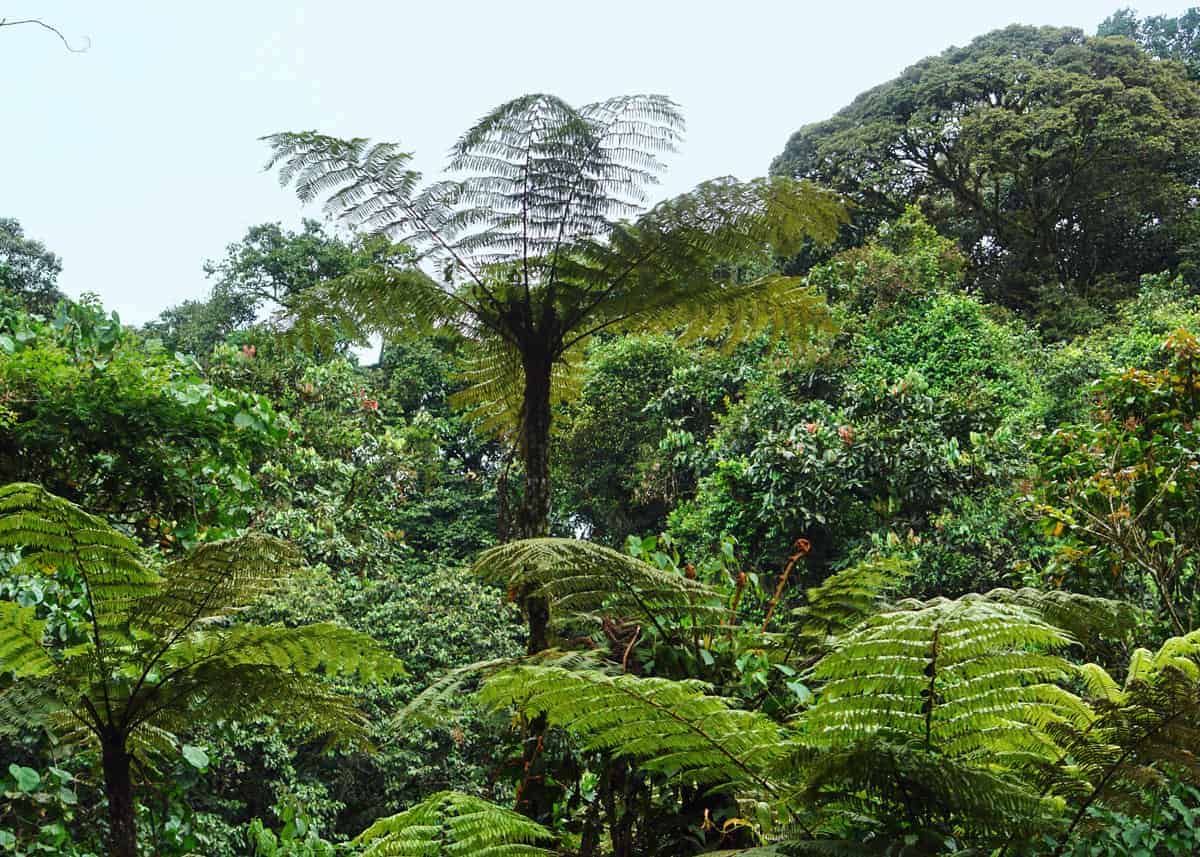
17. They Have Unique Nose Prints
Just like humans, the gorillas have unique fingerprints, but they also have unique nose prints that each differ from all other individuals.
This feature comes in handy for helping wildlife authorities, doctors and researchers to monitor and report injuries, sickness, odd behavior and noted incidents as well as keep track of births, deaths and migration. This data not only helps to protect the mountain gorillas and their population growth, but it also offers a better understanding and more enjoyable trekking experience for tourists.
18. The Tallest and Heaviest Mountain Gorillas
The male mountain gorilla can weigh up to 500 pounds and reach six feet in height. The tallest silverback recorded measured 6ft 4in. The heaviest gorilla recorded weighed in at 585 lbs.
Currently, the world’s largest silverback mountain gorilla is an individual named Guhonda. He is the dominant male of the Sabinyo troop in the Volcanoes National Park of Rwanda and weighs around 225 kg (496 lbs.)
19. How You Can See Mountain Gorillas in Uganda
The only two places in Uganda where you can see mountain gorillas is either Mgahinga Gorilla National Park or Bwindi Impenetrable Forest National Park.
The best way to see them is by joining a trekking tour where a knowledgeable guide will show you how to track the gorillas by their hoot sounds. The wildlife authorities in Uganda have strict rules about viewing the endangered animals so as to protect the gorillas and tourists alike.
The great thing about a trekking tour is that while you track a mountain gorilla group, you can also view other African wildlife species as well. The best time to view the mountain gorillas is during the dry season from December to February or from June to August.
More reading: Guide to the 12 Highest Mountains in Africa
Your Turn
Are you planning to go on a gorilla safari? What interests you most about the mountain gorillas in Uganda? Let me know in the comments.

